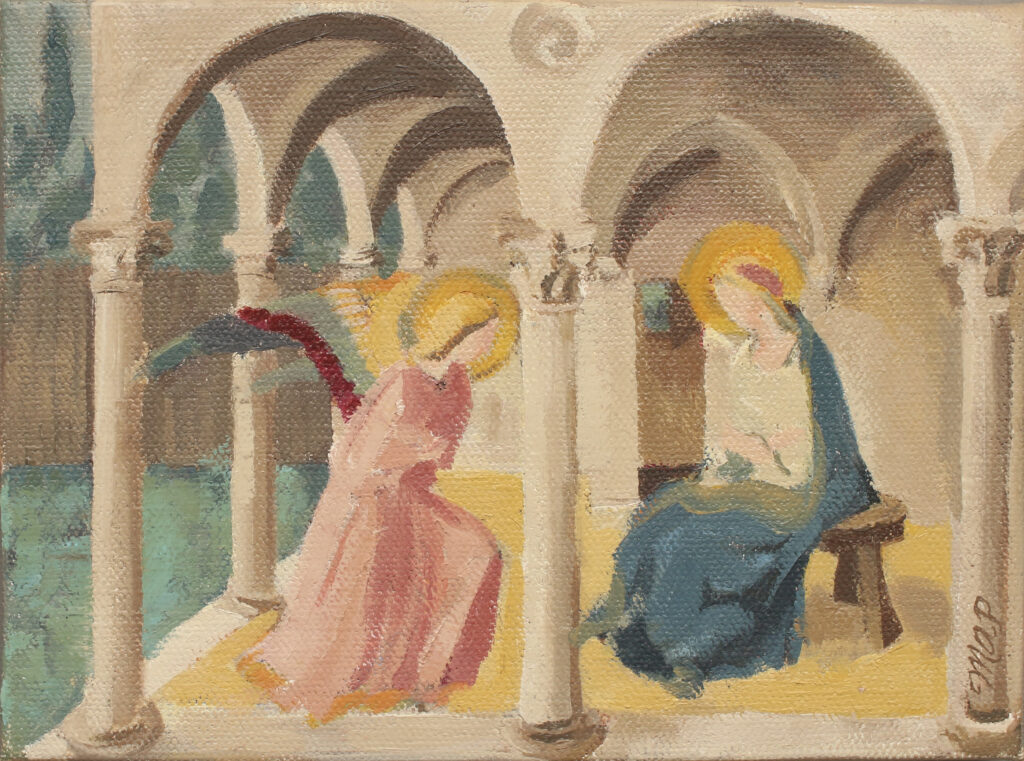
Making “transcriptions” of some of the classic Annunciation paintings is a studio practice which is also a meditation. This part of my studio practice originated from my time participating in a New York Studio School Drawing Marathon.

Making “transcriptions” of some of the classic Annunciation paintings is a studio practice which is also a meditation. This part of my studio practice originated from my time participating in a New York Studio School Drawing Marathon.
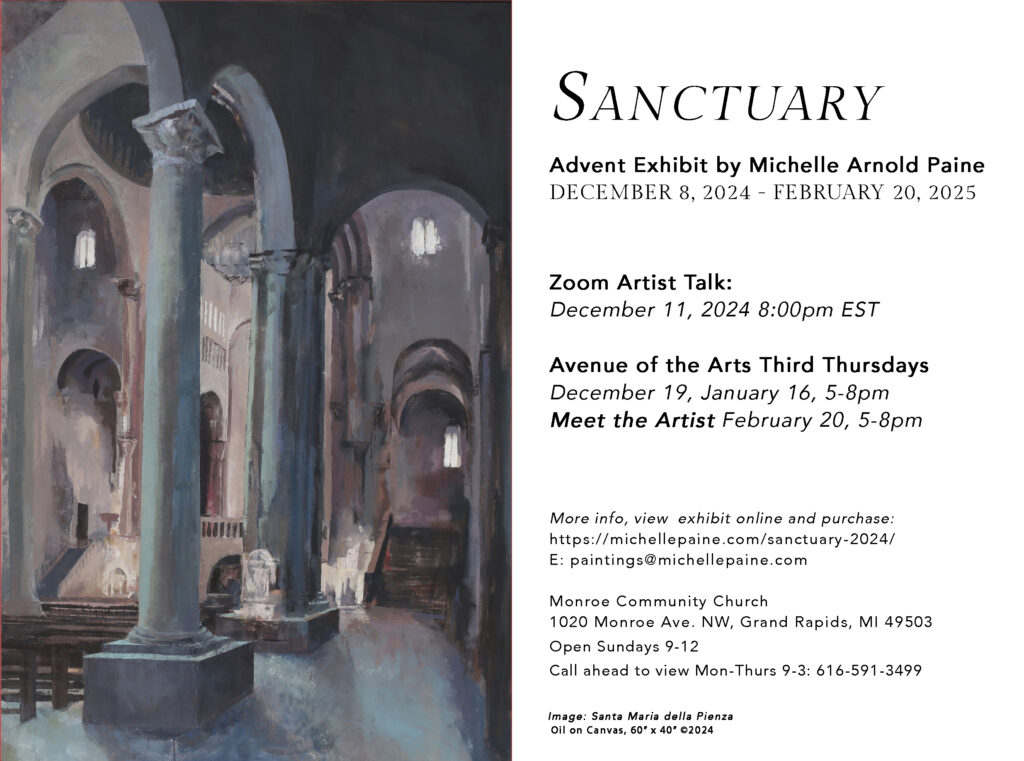
“Sanctuary” is the title of my newest Advent art exhibit. The work will be on display at Monroe Community Church, Grand Rapids, MI from December 8, 2024 – February 20, 2025. These paintings explore the idea of “sanctuary” as God’s physical dwelling place in Mary, Mother of Jesus and in the church.
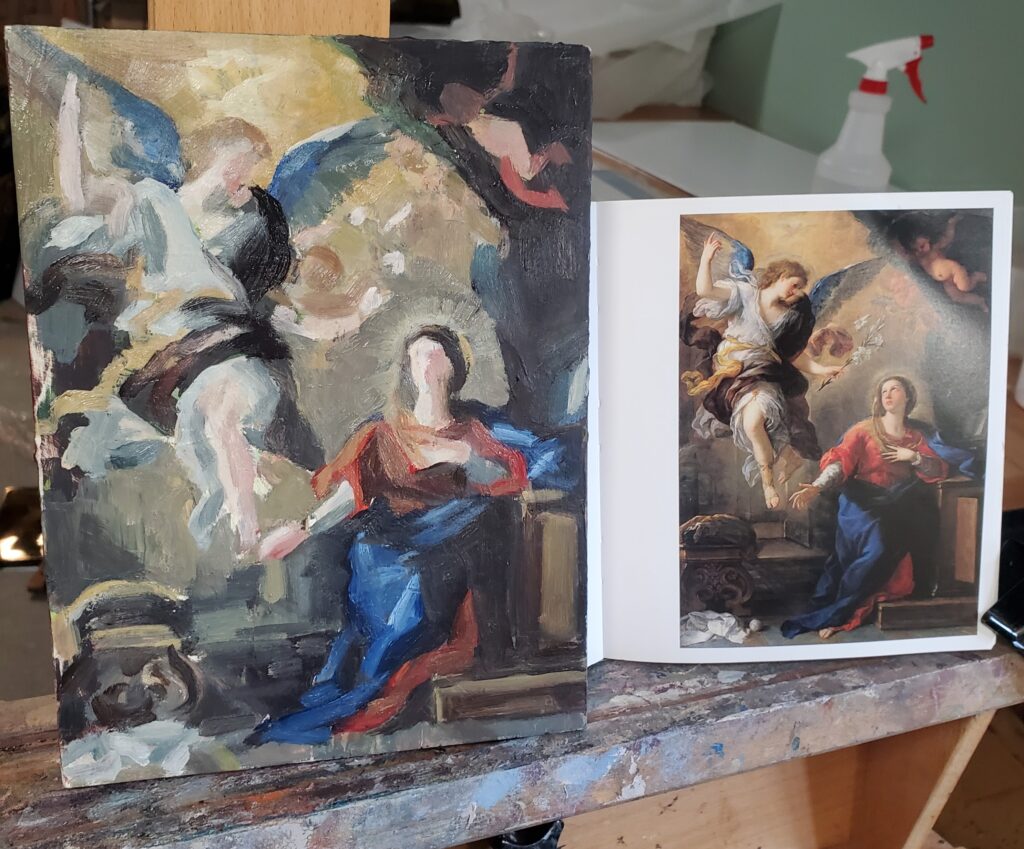
This summer I have been participating in a series of conversations about Art and Synodality. Sponsored by the Catholic Artist Connection, the conversations are in conjunction with the Catholic Church’s three year conversation on listening and walking together in its Synod on Synodality.
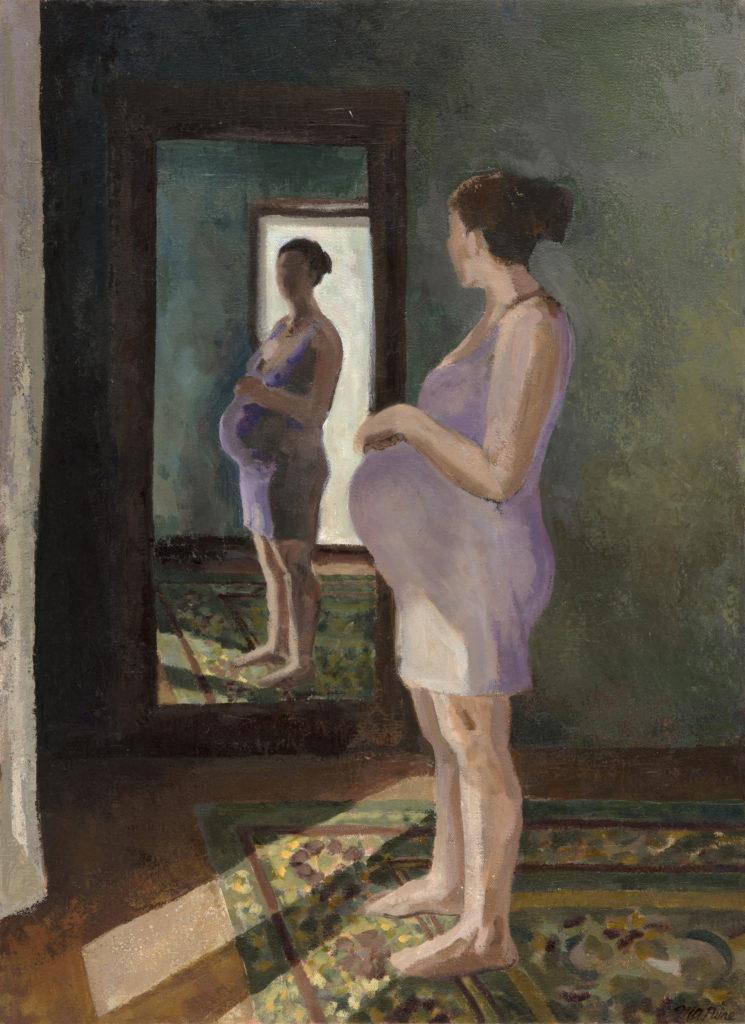
In Genesis 1:27 the author tells us that God creates man and woman “in the image of God.” The woman’s reflection in the mirror is a metaphor for woman created in the image of God. She and the child within her reflect the glory of God just as a mirror reflects light.
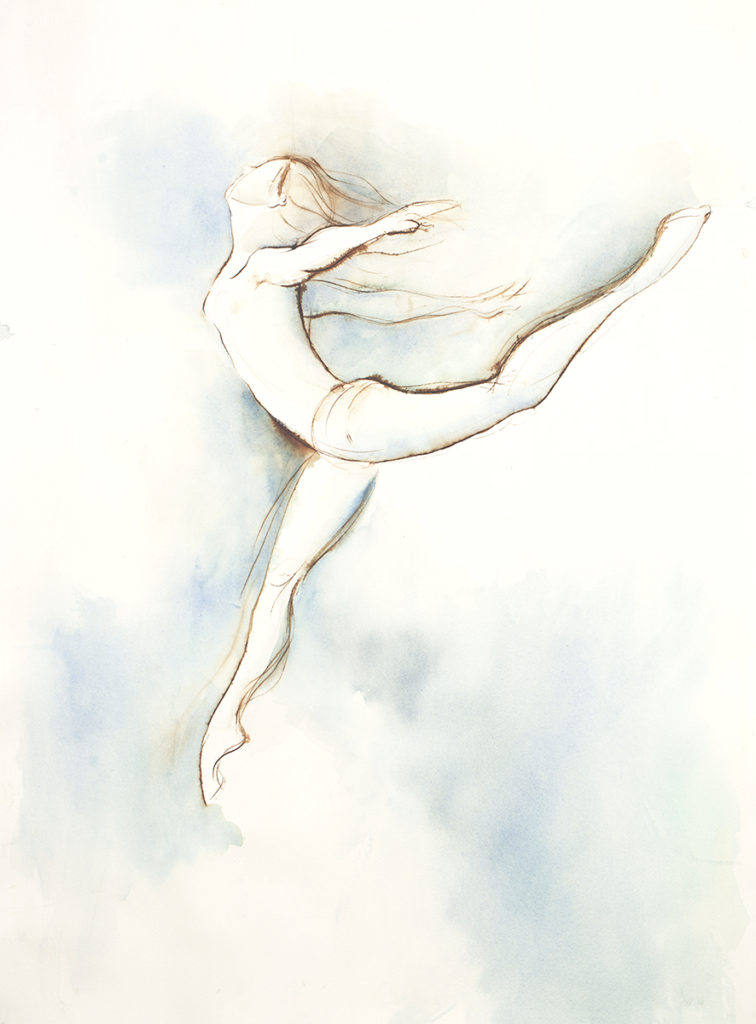
To me, Mary dances the Magnificat. The Magnificat is Mary’s song of Thanksgiving after the angel Gabriel comes to tell her she will become the mother of the Messiah (the Annunciation). When I read Mary’s Magnificat song in Luke 1:46-55, the language is so exuberant that I can’t imagine her standing still.
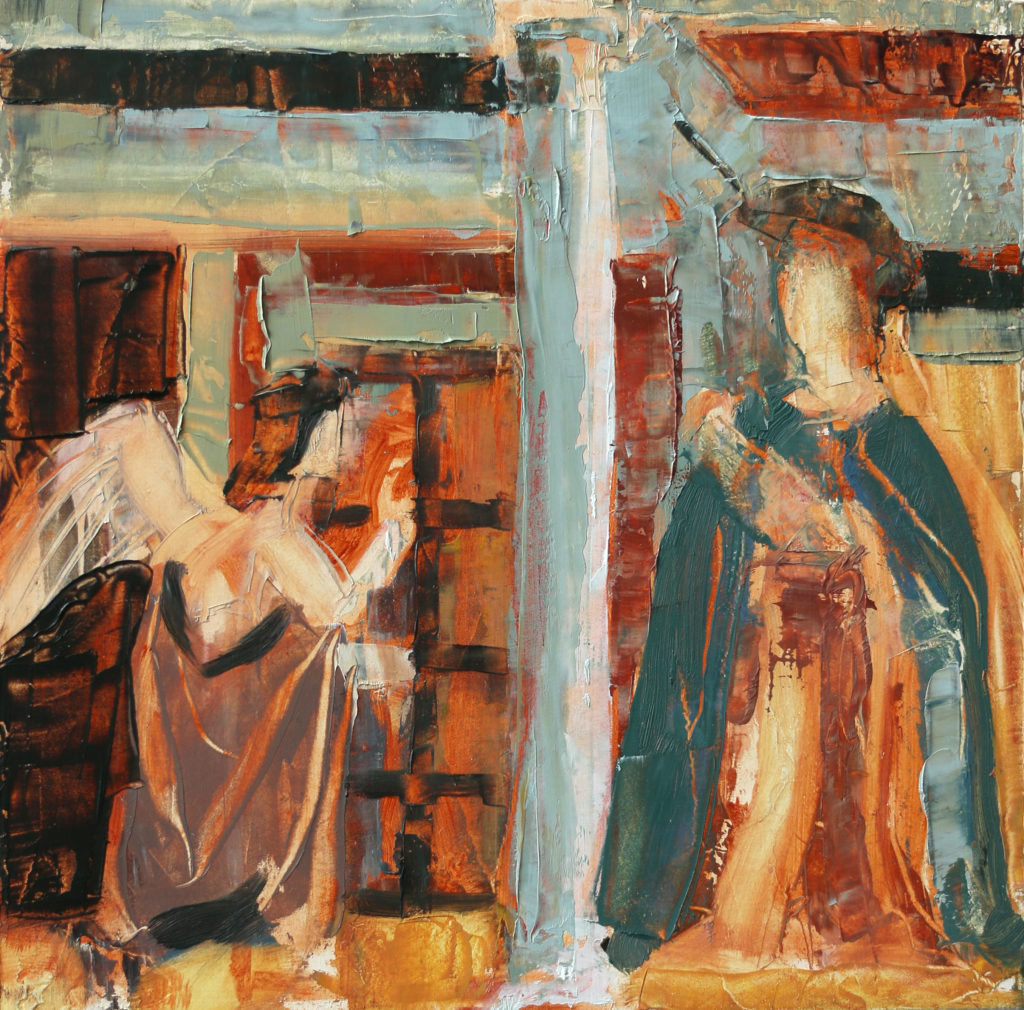
The Annunciation has been one of my favorite images for many years. My paintings seek to create modern interpretations of Mary. In preparation for this endeavor I took on a studio exercise creating small studies of famous Annunciation images. These Annunciation master studies are a study of art history as well as a meditation.
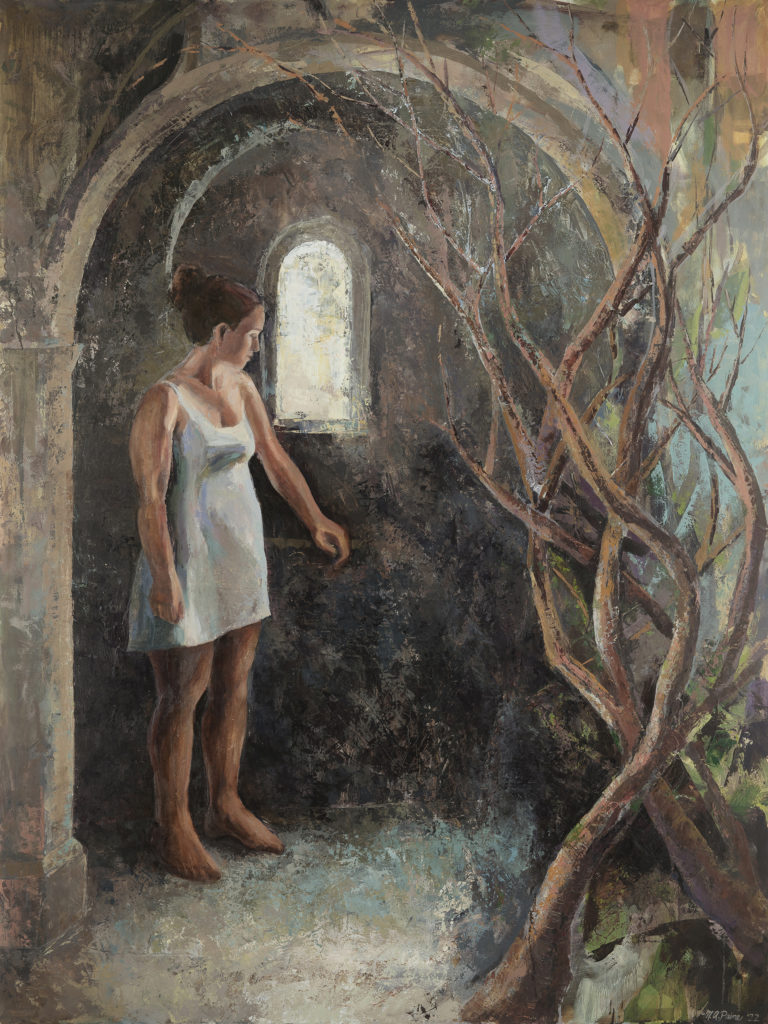
My new painting “Closed Door to Paradise” explores the relationship between Eve and Mary. The painting shows the door to heaven, to Paradise, closed after Adam and Eve took of the forbidden fruit of the tree of the Knowledge of Good and Evil. Eve’s doubt led to the closing of the door to Paradise. God forced them to flee the garden afterwards. They left the Garden of Eden and the harmony of life there and humankind has suffered from sin ever since.
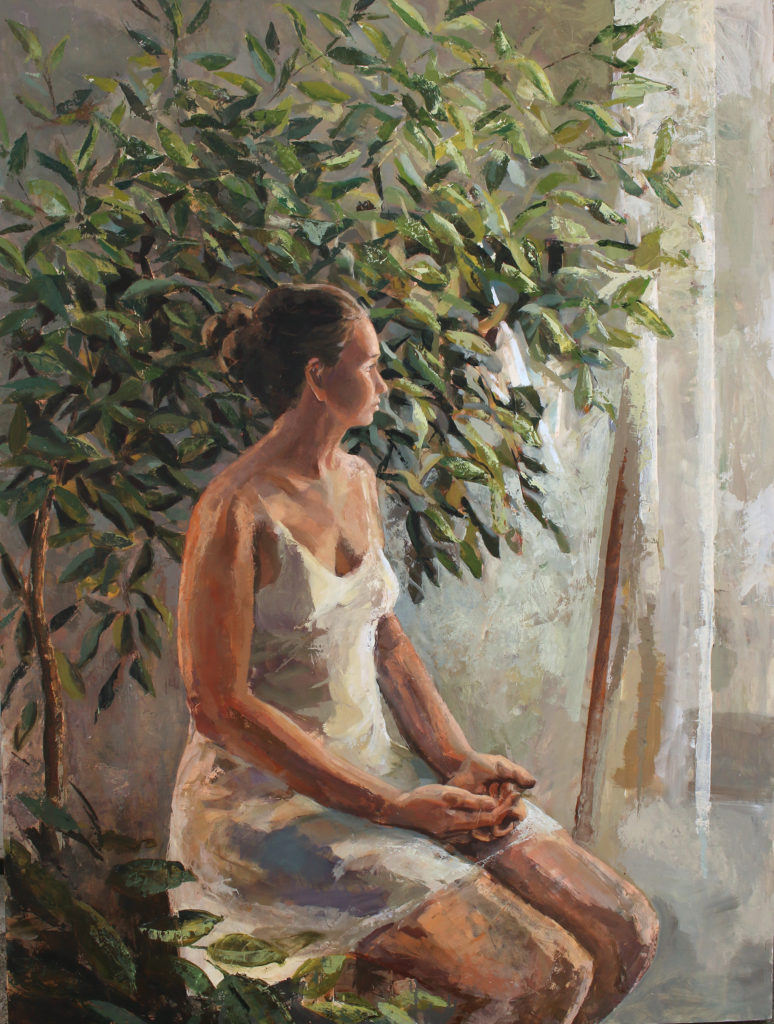
The narrative thread of a tree continues throughout the entire Bible. The tree grow in Genesis, but by the time we get to Isaiah it has been cut down and only a stump remains. However, there is still hope that from the roots a shoot, a small branch will grow again and bear fruit. The image references the words of the prophet Ezekiel, “I the Lord … have dried up the green tree, and have made the dry tree to flourish” (17:24)… And then, towards the end of the Gospel narratives, we come to the tree of the cross.

“Mary the Dawn” represents the the Annunciation, the moment of the Incarnation when Mary welcomed Christ into our world. The title references the first line of a medieval hymn “Mary the Dawn, Christ the perfect day”. The “dawn” spoken of in the poem signals that Mary was sign pointing the way to Christ.
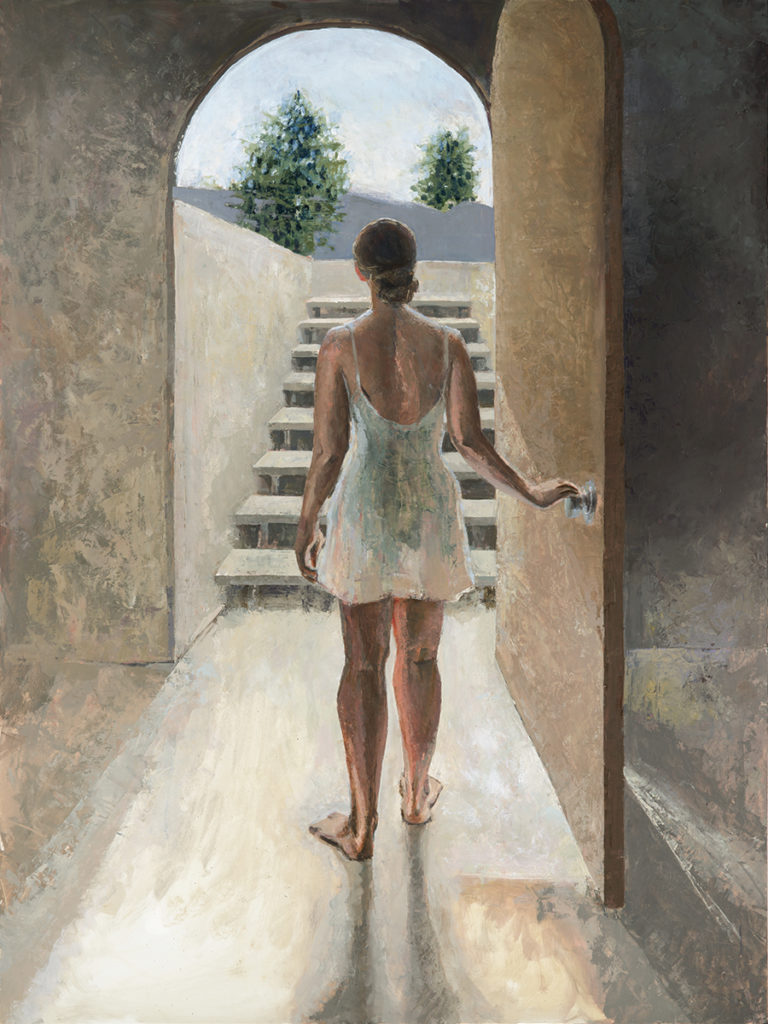
Ascent/Descent is a contemporary interpretation of the Virgin Mary as Jacob’s Ladder. This reading of Genesis 28 views Jacob’s vision of the stairway ascending to heaven as a pre-figuration of the Virgin Birth. Mary was the fulfillment of the LORD’s promise in this passage “I am with you and will watch over you wherever you go, and I will bring you back to this land. I will not leave you until I have done what I have promised you.” Through Jesus’ salvation (brought forth by Mary) we are able to ascend to heaven, and through Mary, Jesus descended to earth. Mary was the vehicle, the connection between heaven and earth which allowed salvation to come.
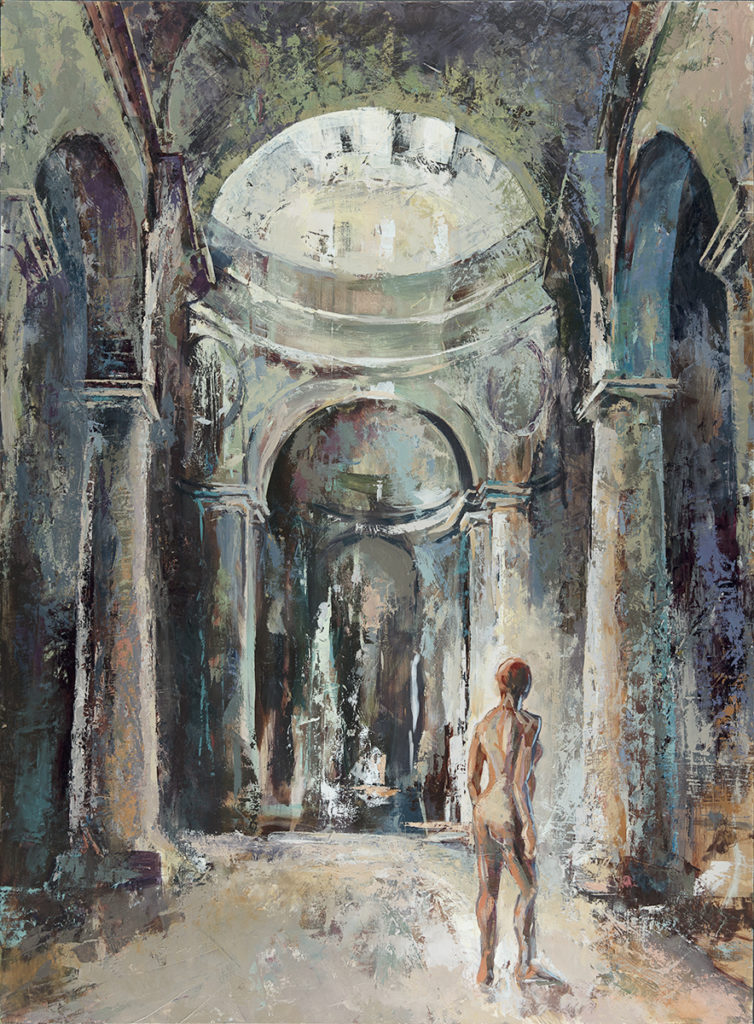
My newest Marian painting “Interrogatio: Inquiry” depicts that moment of questioning “How can this be?” when the angel announced the Christ’s coming to Mary at the Annunciation. Mary’s vulnerability before God is represented here by the nude female figure. The grand space of the architecture represents God’s overpowering presence. The architecture also becomes a metaphor for Mary herself, often referred to in medieval texts as the Temple or dwelling place of the Lord because of her role in the Incarnation.
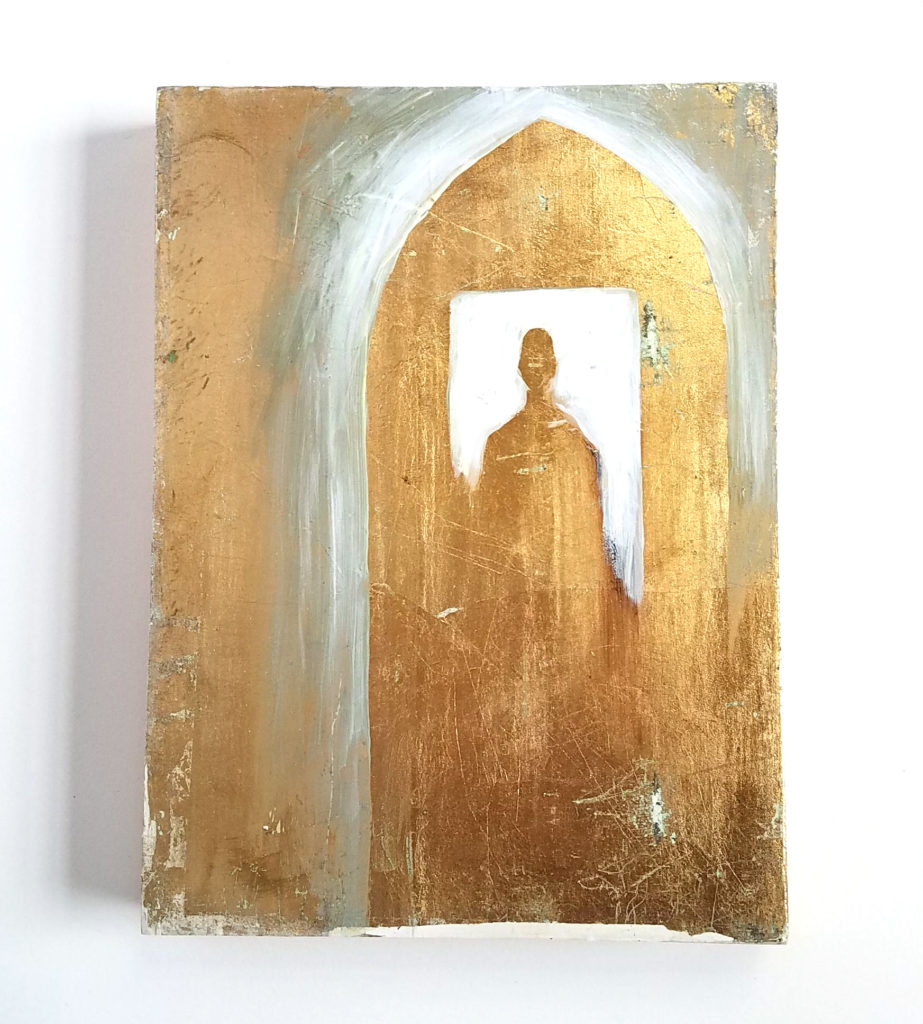
My newest series of Gold Silhouette paintings are meant to be contemporary icons, modern interpretations of traditional icons. Whether architecture or figure, even landscape, my work has always centered on a theme of convergence between heaven and earth. Similarly, these new mixed media pieces juxtapose the expressive minimalist quality of my figure drawings with the other-worldly materials of metal leaf and paint inspired by iconography.
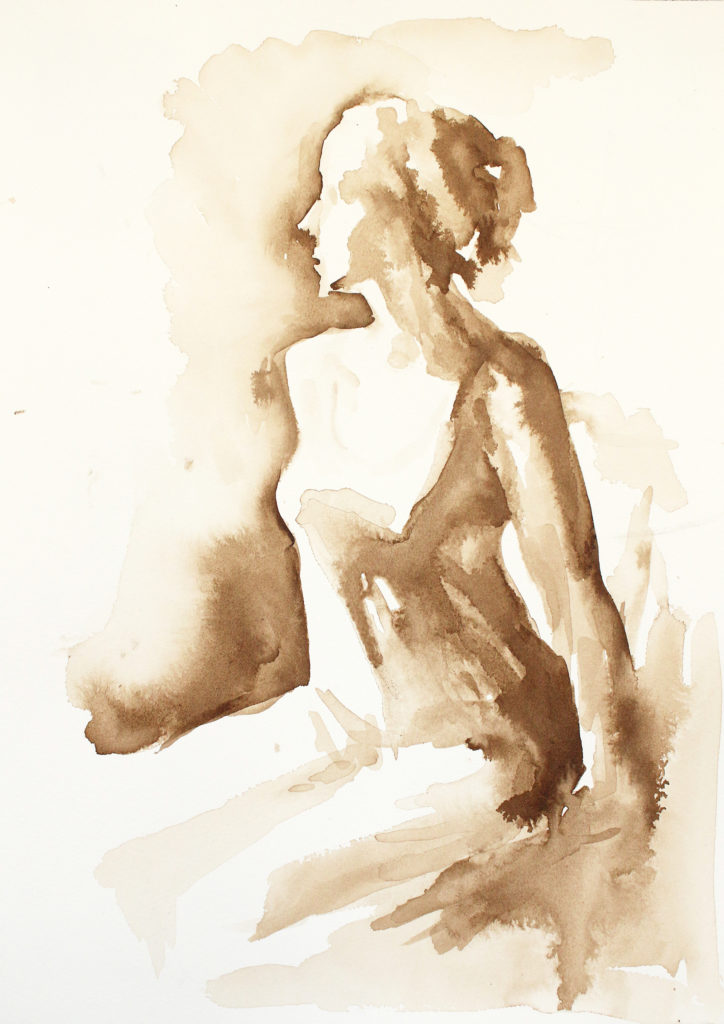
One of the miracles of creative collaboration is the momentum it creates, continuing to create new work beyond what was originally envisioned. After the model session, once my drawing was photographed and titled and shared, Olivia wrote this poem in response to the drawing.
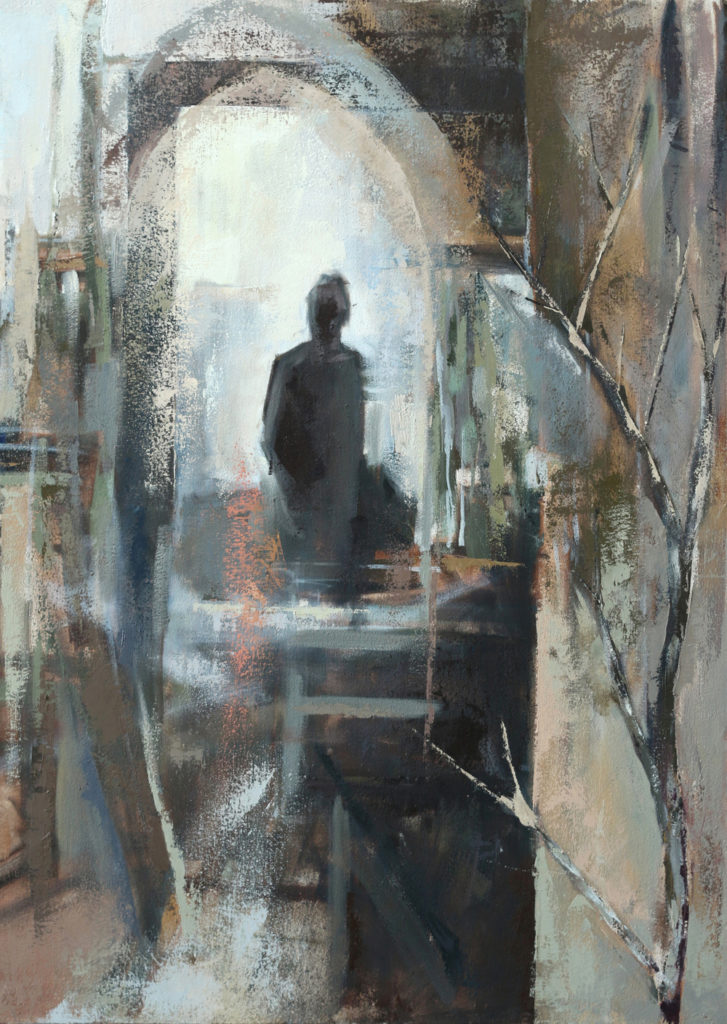
The figure in the mirror is attentive, ready, waiting, poised in the act of creating. Her world is not limited to the objects before her – the mirror, the window, the branch. Within them, through them, she sees more: she sees deeper into a physical world than would be considered possible at first glance
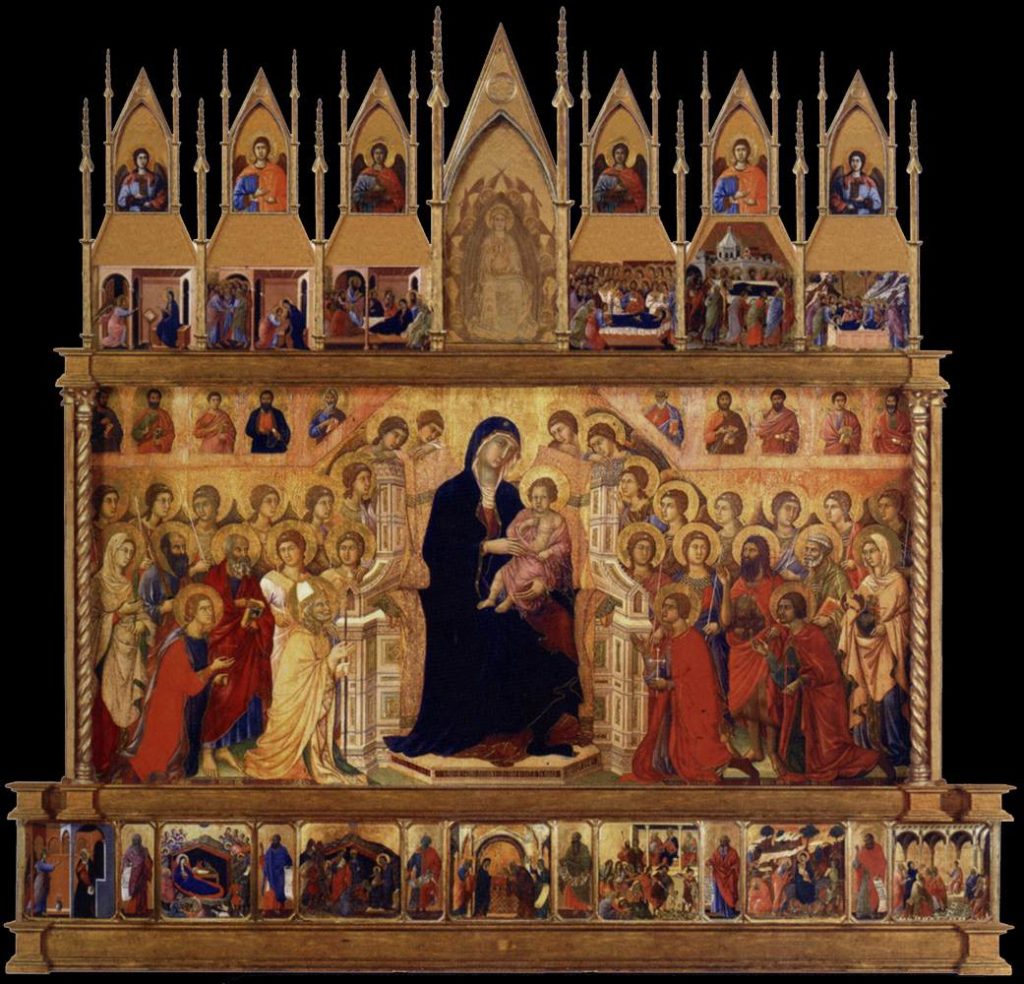
“Sacred art is true and beautiful when its form corresponds to its particular vocation: evoking and glorifying, in faith and adoration, the transcendent mystery of God.” From the Catechism of…
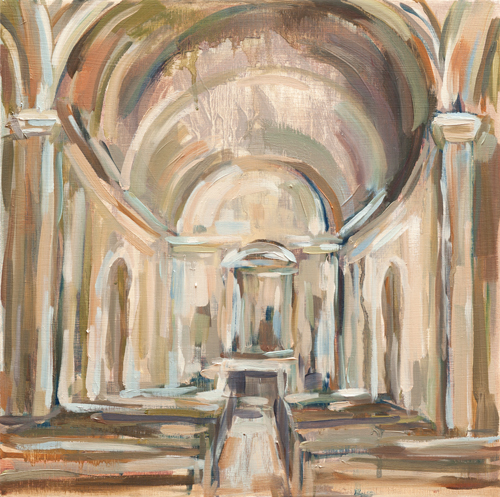
Hard to believe we are moving again less than a year after buying our first home! We didn’t mean to do that! My husband got a position with the…

This painting – one of the newer ones in my series of Figurative Paintings reflecting on the Virgin Mary – is on its way to the Kreft Arts Center at…

You’ve probably noticed that much of the subject matter of my work has Christian undertones – church architecture, references to the Virgin Mary, as well as to aspects of art…
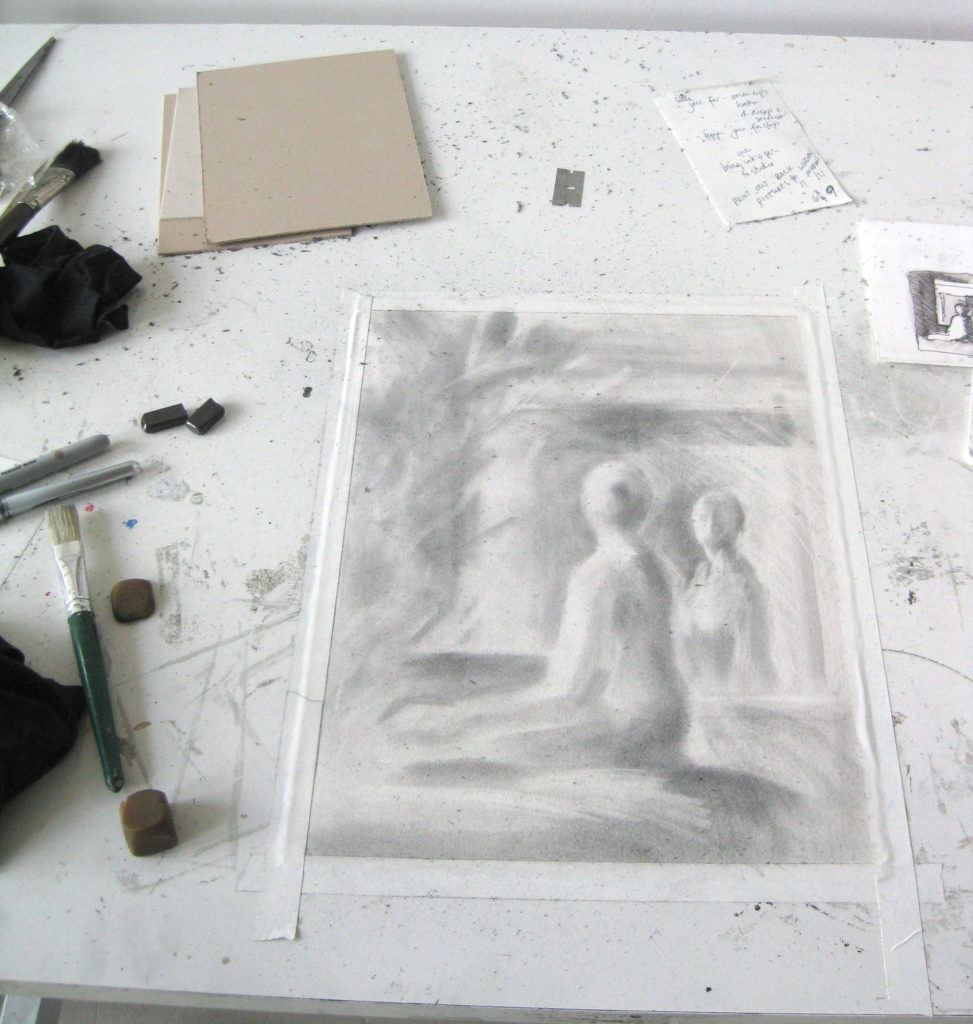
I’m starting work on a new series of paintings (well, a continuation of the figurative series based on Mary from several years back). So I’m starting work on a new…
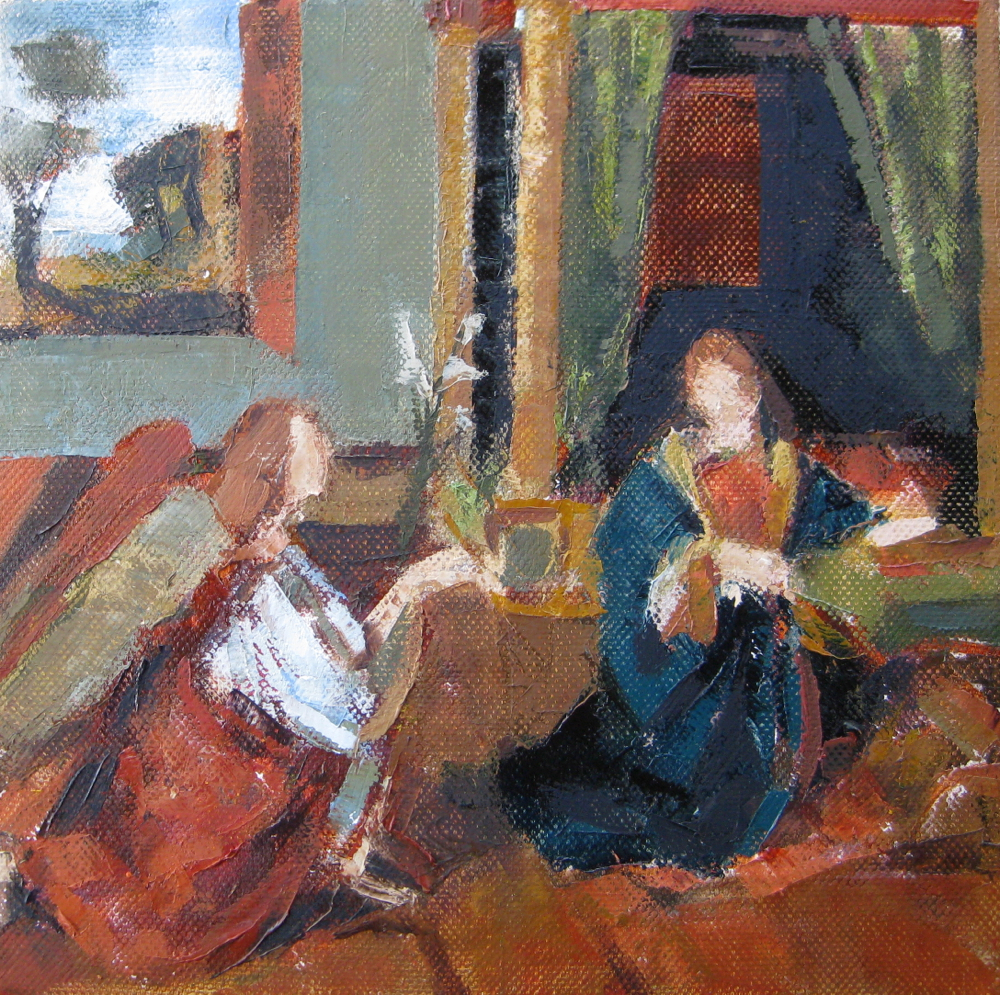
The Feast of the Annunciation was moved to April 8 this year, since March 25 fell during Holy week. The Annunciation celebrates the moment when the angel Gabriel announces to Mary that she will bear the Savior. This series of Annunciation master studies I have shared over the last months is about waiting, and the expectation of new life. At times this “new life” has been a metaphor for new beginnings, forgiveness, spiritual renewal, but in 2012 the time of waiting was literal, as I waited, in pregnancy, for my baby girl to be born…
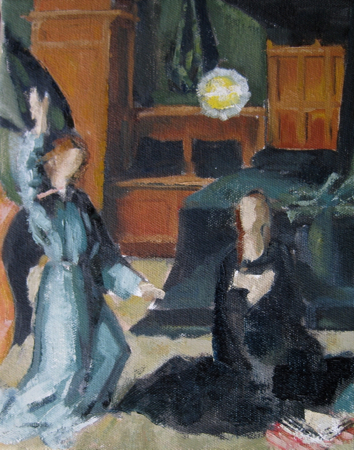
This Annunciation transcription will be included in the exhibit Compassion: The Good Samaritan, opening at Adams ArtSpace, Harvard College, Cambridge this weekend.
The Annunciation is the moment when God comes to earth – when human and divine come together to become incarnate in Jesus, Savior of the world. The Incarnation, God’s greatest act of compassion.

Appropriate to post another Annunciation transcription today, the Feast of the Archangels (Gabriel, Michael and Raphael). This particular Renaissance Annunciation infuses Classical architecture into the Biblical story of the Gabriel’s announcement to Mary. The painting also shows off the artists’ knowledge of perspective in the way that the artist places the angel in the foreground.
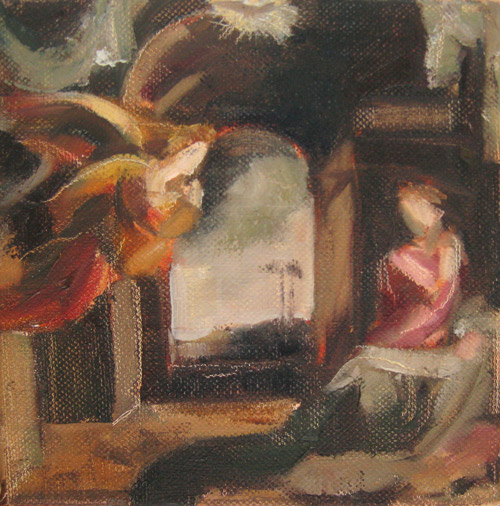
Another in my series of Annunciation transcriptions. The original Mannerist painting was completed in 1546 by Italian Domenico Beccafumi and is currently in the little town of Sarteano near Siena, Italy. I’m not always a fan of Mannerism, but I like the mirrored swooping curves in this painting and the sense of motion it creates, so different from the very still, stable Annunciations of Fra Angelico.
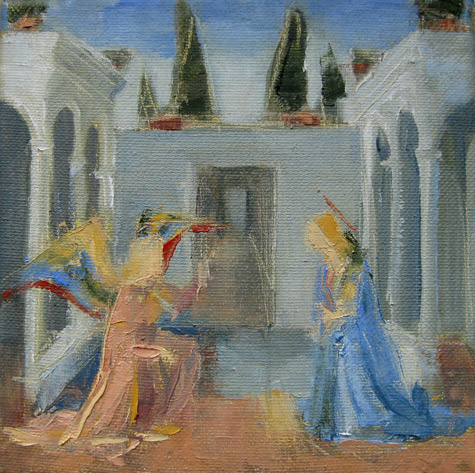
Another in my little “Annunciations from the Masters” series, from a predella by Fra Angelico, 15th century Florentine painter, who was also a Dominican brother. Graham Nickson of the New York Studio School says “the transcription endeavors to understand the nature of the original work.
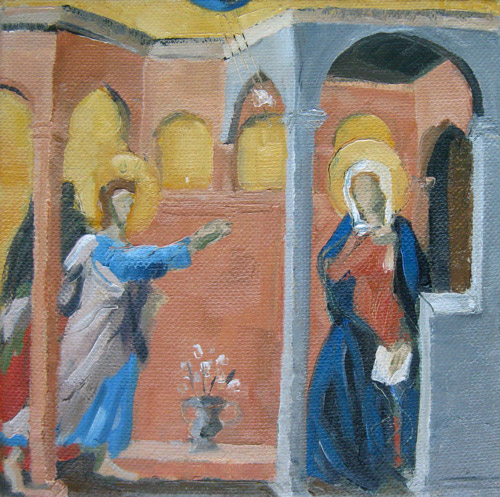
What is the purpose of “copying” a work of art? Franklin Enspruch phrases it like this in a review of Wendy Artin’s series of watercolors of the Elgin Marbles: “She is at once paying the sculptures due homage, studying them for artistic clues, and using them to reach upward in ambition and scale.”
Somehow, in entering in to someone else’s creation, one often emerges at the other end with a clearer, renewed sense of voice and direction.

I love the brilliant blue and of Mary and her contemplative gaze in the Annunciation altarpiece by Ambrogio Lorenzetti. Lorenzetti was a Sienese painter in the first half of the 14th century and this work of his is presently housed in the Pinacoteca Nazionale in Siena, Italy. My version is tiny, only 6″ x 6″, but I’m looking for the contemplative quality he captures.

These paintings are a metaphor for the struggle of my own experience to know Christ and seek to become more like his mother Mary. The metaphors in this poem, and others found throughout art history, continue to open my understanding of Christ’s relationship with his mother.

Cardus has just published another of my paintings in their online journal Comment.
Our Lady of the Barren Tree is an image of hope: the strange beauty of winter, in which it requries faith to believe that trees and grass are only “sleeping” and will return with new life and growth.
The tree, the vine, the branches – these images evoke the memory of Eve in the garden of Eden whose disobedience eventually brought on the exile of humanity from paradise. Eve’s disobedience was eventually redeemed in the act of Mary’s obedient “May it be to me as you have said”.
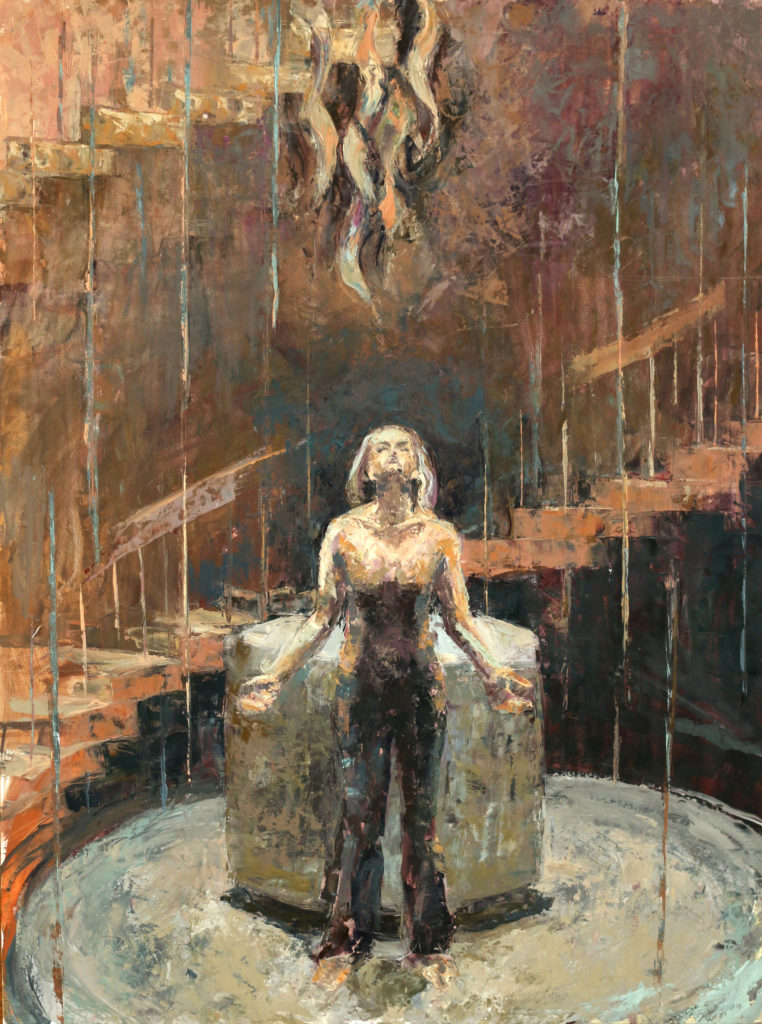
There is a new section on my Portfolio page: New Figurative Work. It includes the body of work from 2009 that I exhibited at Valparaiso University. To read the poem…
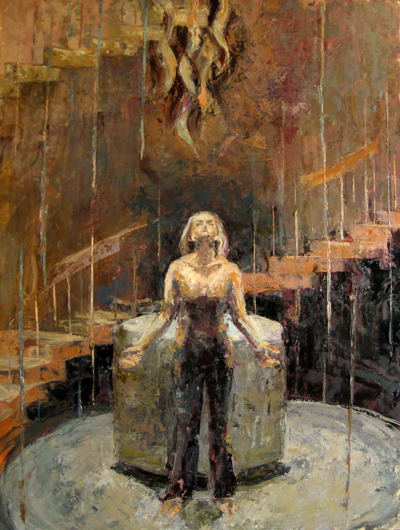
My painting of “Mary the Font” was inspired by, and is now in the collection of, Valparaiso University Chapel. During the Artist-in-Residency I had at Valparaiso University in December I…

Before leaving for Italy next week I have been very intensely preparing work for an Artist-in-Residency at Valparaiso University in Valparaiso, Indiana.

This is one of those days I would love to be back in Italy – it is warm, but not too warm, but somehow the lure of my suburban street is not as strong as the lure of an Italian street – when I am there I am always pulled outdoors to smell and see and greet and experience some one or some thing that is “new”. But part of the lure is that there is so much that is not new – it is the very, very old which is so appealing.